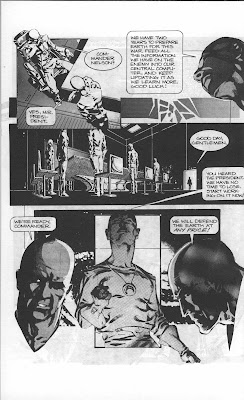'Heavy Metal' magazine December 1985
December, 1985, and in heavy rotation on MTV and on the FM radio is 'Broken Wings' by Mr. Mister, which was released in September of that year. The song made it to the number one spot on the Billboard pop chart in December.
The latest issue of Heavy Metal is out, with a cover by Ajin. Inside, editor Julie Simmons-Lynch announces that a 'new' Heavy Metal is debuting in January of 1986....
This 'new' Heavy Metal will be published only four times a year, on a quarterly basis. According to Simmons-Lynch, this change is necessary to provide readers with "....a bigger, more handsome, even more exciting quarterly edition....there will be no continued stories."
Readers with a less naive frame of mind might well conclude that given that moving to a quarterly publication schedule is something magazines do when their circulation and sales revenue fall to a level that cannot sustain a monthly schedule. Whether or not this is the case with Heavy Metal, one thing already has changed: the 'Dossier' section is absent in this December issue.
The good news about the December issue is that it features a great little strip by Caza, 'The Trial of Marlon Malone', which I have posted below.

























































.jpg)






















